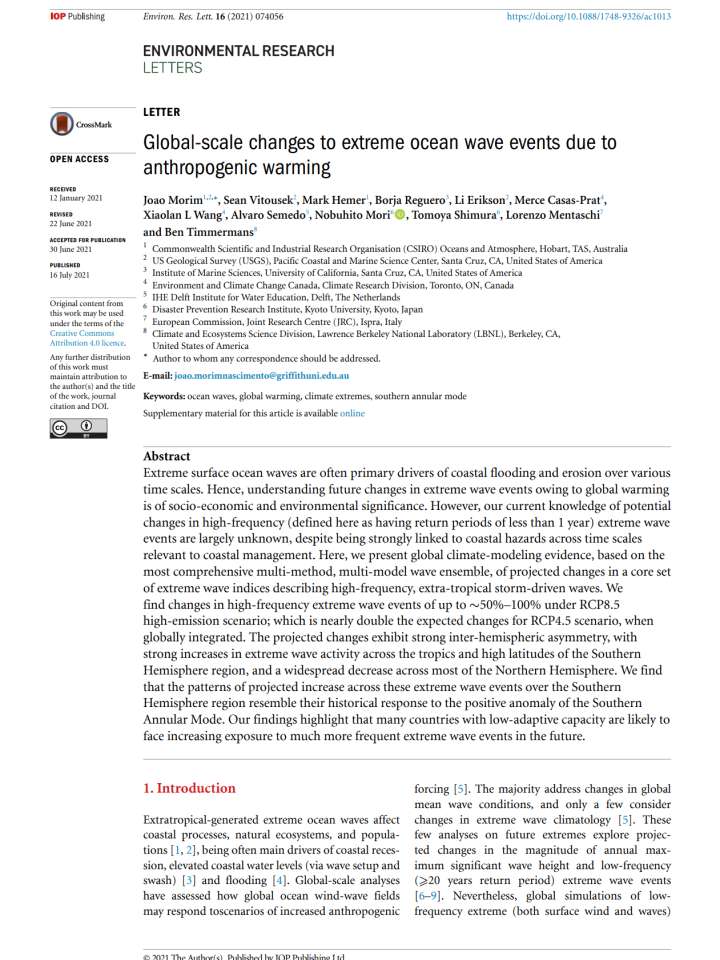Global-scale changes to extreme ocean wave events due to anthropogenic warming
This study provides perspective on projected future changes in extreme ocean waves by quantifying change in high-frequency extreme wave events over decision or impact-relevant time horizons using a multi-index approach and a large multi-method multi-model ensemble. The projected increases in high-frequency extreme wave forcing across most of the Southern Hemisphere present broad-scale implications for many coastal countries that face increasing threats from coastal hazards.
The findings of the study reveal a strong inter-hemispheric asymmetry, with up to ∼50%–100% increases in extreme, persistent wave events (i.e. wave-storm-spell duration) over the low and high-latitudes of the Southern Hemisphere and ∼20%–50% decrease across the Northern Hemisphere. The expected increase in these extreme wave events will likely exacerbate coastal impacts, atop impacts of sea-level rise. More frequent sustained storm wave days are likely to impact capacity of coastlines to recover, exacerbating erosion patterns, and hence increasing coastal risks and the needs of adaption these regions. In the future, global climate models and downscaled global wind-wave projections may potentially provide a more robust insight on the magnitude, frequency, and duration of multi-decadal to centennial-scales extreme events.
Explore further
